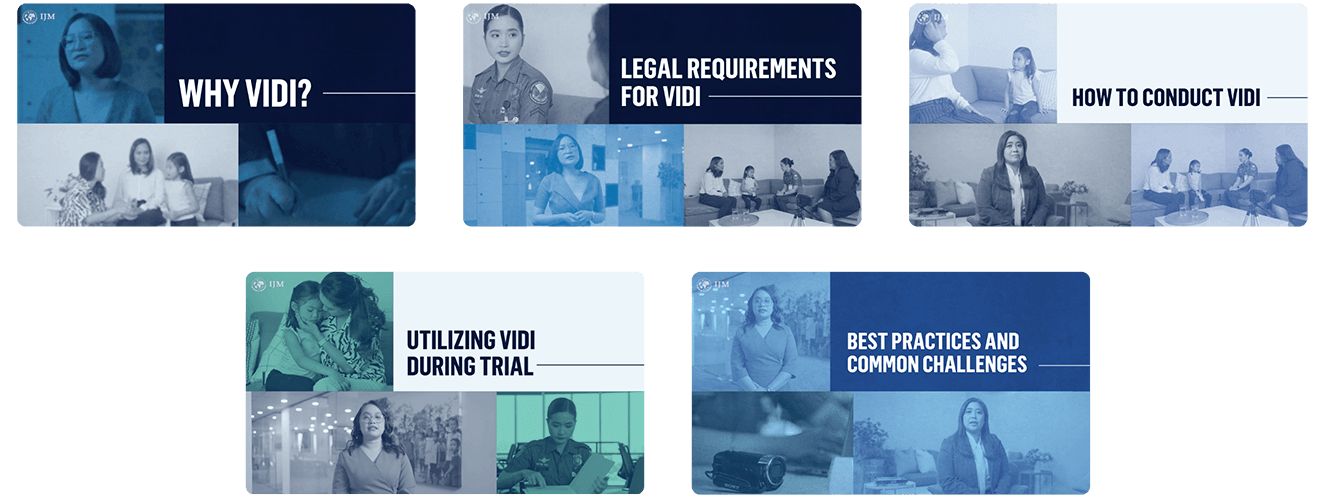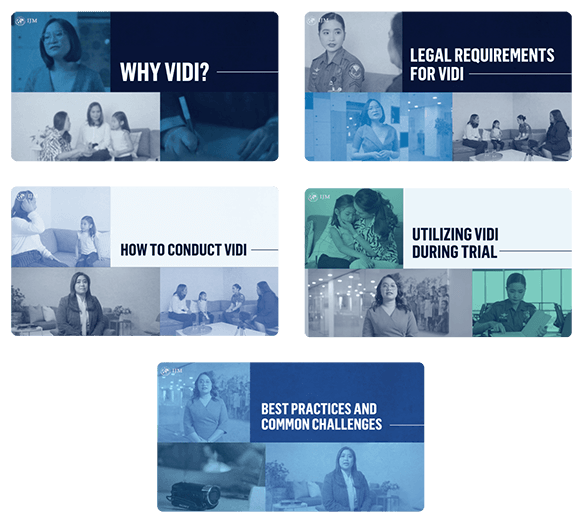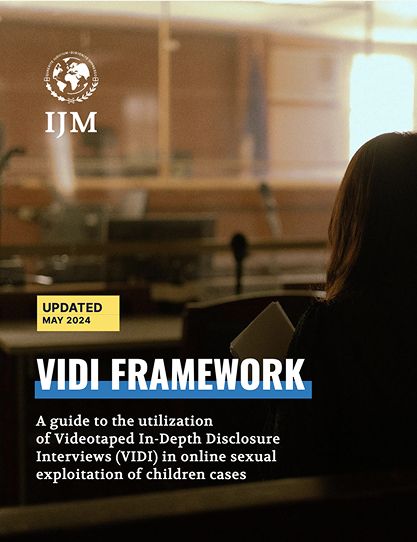VIDI ORIENTATION
An instructional video series on conducting Video In-Depth Disclosure Interviews
USING VIDI IN OSAEC CASES
The 5-part series includes role-plays, legal bases, and practical guidance on VIDI, to equip you to utilize VIDI for testimonies of child survivors in your casework.


Video Contents
- 1. Why VIDI?
- 2. Legal Requirements for VIDI
- 3. How to Conduct VIDI
- 4. Utilizing VIDI During Trial
- 5. Best Practices and Common Challenges
Total run time: 35 minutes
VIDI AS BEST PRACTICE IN CHILD ABUSE CASES
“We envision this video contributing to the mainstreaming of VIDI as a standard of best practice in handling child abuse cases.”
The VIDI Orientation Video is intended to be a foundational tool for trainings on OSAEC and child protection, pre-operation case conferences and briefings, trainings for caseworkers handling child abuse case, and onboarding for new caseworkers handling child abuse cases, amongst others.
We envision this video contributing to the mainstreaming of VIDI as a standard of best practice in handling child abuse cases. Our goal is to see a stronger, more trauma-informed response to OSAEC—one where survivors are not only protected from harm, but afforded agency, voice, power, and dignity. We believe that together, we can advance survivor-centered investigation and prosecution practices in the best interests of the child and ensure that our pursuit of justice always protects the most vulnerable.

The child in the VIDI orientation video is an actor, not an OSAEC survivor.

“
The use of videotaped in-depth disclosure interviews is a great leap forward in child protection. In IJM-supported online sexual exploitation rescues, 71.32% of the rescued victims were children. Testifying in court and facing their traffickers puts the child at risk of further trauma. But with VIDI, the testimony of a child survivor is recorded in privacy and safety.
An excerpt from the VIDI Orientation video, as narrated by Atty. Nelisa Guevara-Garcia, Director, National Prosecution Development, IJM Philippines
VIDI AND ITS ROLE IN CHILD PROTECTIVE PROSECUTION
“The VIDI can minimize retraumatization during legal proceedings by allowing child survivors give their testimonies in a safe, trauma-informed setting.”
The majority of OSAEC perpetrators are the victim’s family members or persons known to the victims. This makes testifying in front of and against their abusers extremely distressing for OSAEC survivors, who are susceptible to retraumatization. These relationships also pose the risk of survivors refusing to participate in the proceedings against their abusers after some time, or survivors’ testimonies being influenced by their abusers or their families.
One legal tool to address these is the Videotaped In-Depth Disclosure Interview (VIDI). The VIDI can minimize retraumatization during legal proceedings by allowing child survivors give their testimonies in a safe, trauma-informed setting. This also allows investigators and prosecutors to gather and preserve crucial evidence from survivors without repeatedly subjecting them to the trauma of retelling their abuse. VIDI finds its legal basis in the Rule on Examination of a Child Witness, and further supported by the passage of R.A. No. 11930, and R.A. 11862 which further amended R.A. No. 9208, and their respective Implementing Rules and Regulations.




